A western state university is the professional home to a music professor who has enjoyed an international career in music and operatic performance. He is admired for his many musical accomplishments, but he is envied for his skill as a crossword puzzle champion. He once said, “Will I rue a life wasted doing crosswords? Yes, but I do know the three-letter-word for regret.
The crossword puzzle is the most popular and widely available word game in the world, but it has a relatively short history – the first one published was the work of a journalist named Arthur Wynne of Liverpool, England.
The first English puzzle featuring words in a vertical-horizontal grid was printed in a child’s puzzle book and later ones appeared in various periodicals. Wynne’s first puzzle appeared on Sunday, December 21, 1913, in the New York World. The new puzzle concept met nationwide approval in the United States and within a decade the crossword was featured in almost every American newspaper and became a serious adult pastime.
The first British puzzle was in the February 1922 issue of Pearson’s Magazine. Surprisingly it took nearly eight years before Raphael Tuck and Sons published their six-card postcard set entitled, The Cross Word Craze. It is quite curious that Tuck made the corporate decision to market the crossword set only in Britain.
In the latter half of the 1920s many newspapers picked up on the pastime. There have been reports that newspaper sales increased by nearly 12% after a newspaper added a puzzle to their daily publication. Even today, puzzle fans will defend their newspaper purchases based on the version of the crossword the paper prints. Shortly after the first New York Times puzzle was published on Saturday, February 1, 1930, the crossword editor said: “Solving crosswords eliminates worries, they make you a calmer and more focused person.” He was right.
By the mid-1930s crossword puzzles had spread into a worldwide phenomenon. Puzzles materialized in a dozen other languages, among them, Afrikaans, Arabic, Chinese, Croatian, Czech, Danish, Dutch, Finnish, French, German, Gujarati (Gujarati is the 6th most widely spoken language in India), Hebrew, Hungarian, Italian, Japanese, Norwegian, Portuguese, Russian, Spanish, Swedish, Thai, and Turkish.
Some fine examples of foreign language crosswords are the ones below. Each in the six-card set shows an Italian language puzzle that may have been the inspiration of the New York Time’s Daily Mini. They are among the very few crossword themed postcard purchases I have found.
People do crosswords for many reasons – as a challenge to keep the mind active, to relax after a busy day or while commuting to work; but how much do we really know about these brainteasers?
Do they know that early crossword puzzles had no black squares? Do they know that the world’s largest crossword is seven feet square and has 28,000 clues, the answers to which fill over 91,000 squares? (Copies are available online for $29.95.) Do they know that it is true that crosswords that are supplied to newspapers for syndication are designed to increase in difficulty throughout the week, with the easiest puzzle on Monday and the most difficult on Saturday? Do they know that a New York Times Sunday crossword, which is included in The NYT Magazine is an American cultural icon and typically is not the week’s most difficult?
The crossword craze has continued through the years and is now an online routine for millions. There is a puzzle at the New York Times website called the Daily Mini. Statistical reports calculated using online access to that page exceed seven million hits daily. Another fun fact from the early years is the number of shirts and dresses that were sold with designs that mimicked crossword grids. And, today in specialty gift shops (usually in airports), you can buy toilet rolls printed with crosswords waiting to be solved.
In the United Kingdom, Queen Elizabeth and at least five Prime Ministers (Churchill among them) were renowned crossword puzzle enthusiasts. In America, FDR was known to scold anyone who “fooled” with the crossword puzzle in his morning newspaper.
One more crossword fact: late in 1941 after readers of London’s Daily Telegraph finished the crossword they would send postcards to the newspaper office with the date, their name, address, and the length of time it took them to solve the puzzle. The Daily’s editors were impressed with the speeds of many and decided to hold a competition. Twenty-five competitors were invited to the newsroom to compete in a timed-test.
There were some participants who finished the puzzle in less than the expected 12 minutes. The first to finish took 6 minutes, 3 seconds, but he was disqualified for misspelling a word, the second-place finisher took 7 minutes, 57 seconds – he was awarded a cigarette lighter.
When the contest and the results were announced an “official” in the War Office at Bletchley Park contacted the winners with an invitation to apply to work as cryptographers. Two of them did and were hired. There is no record as to what success they had.
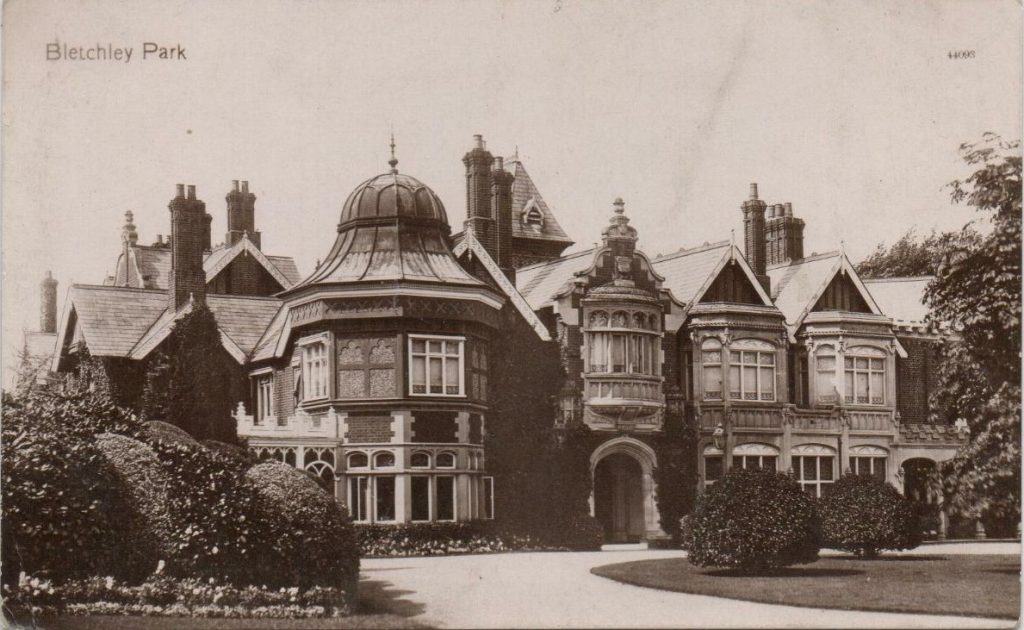
codebreakers during World War II.
**
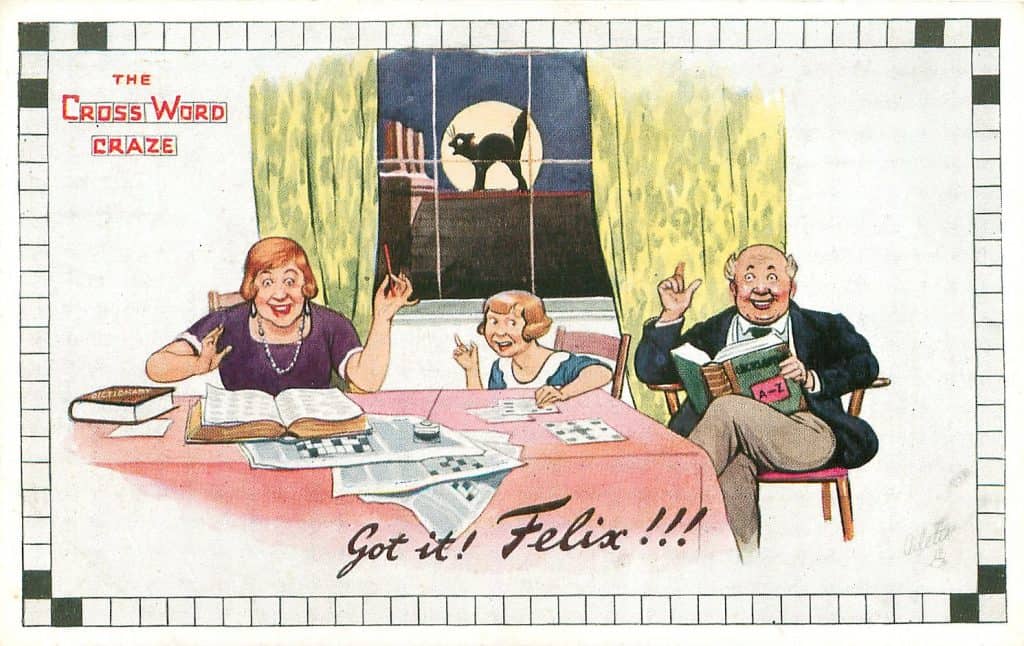
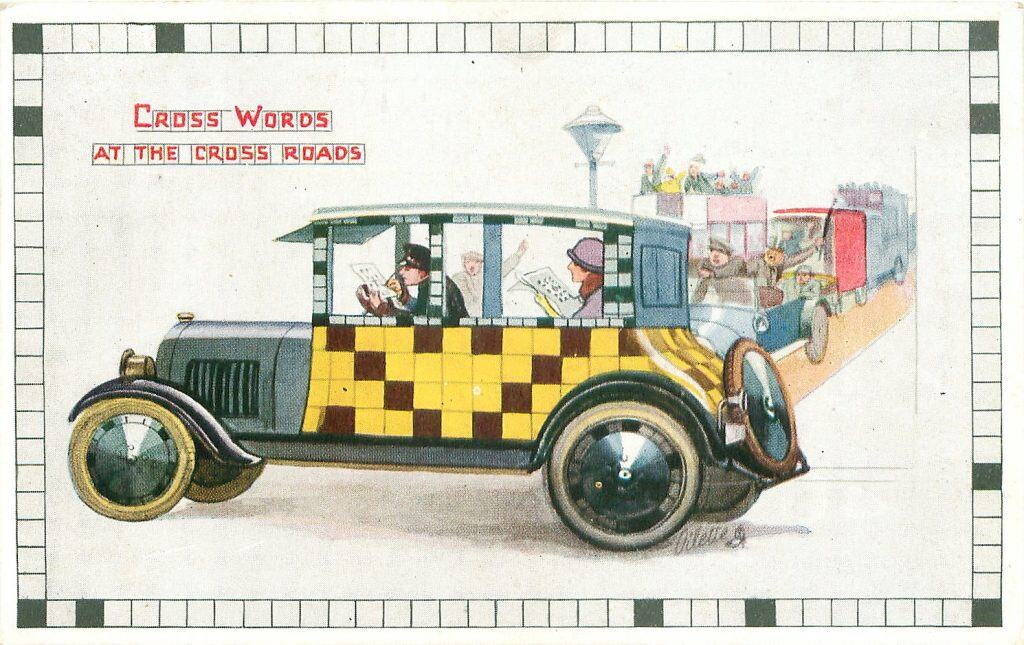
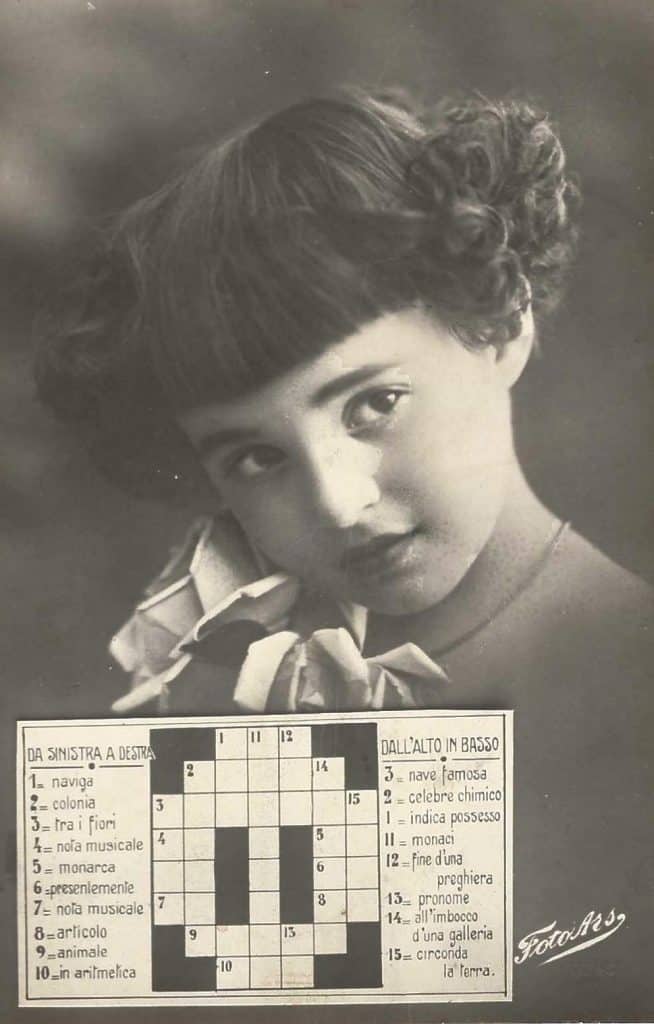
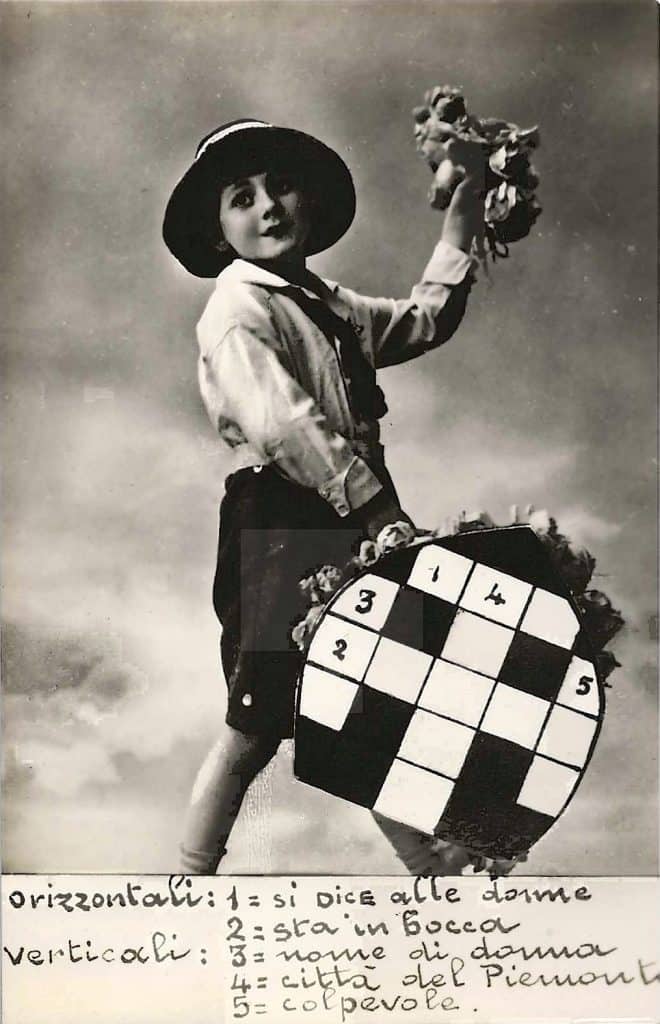
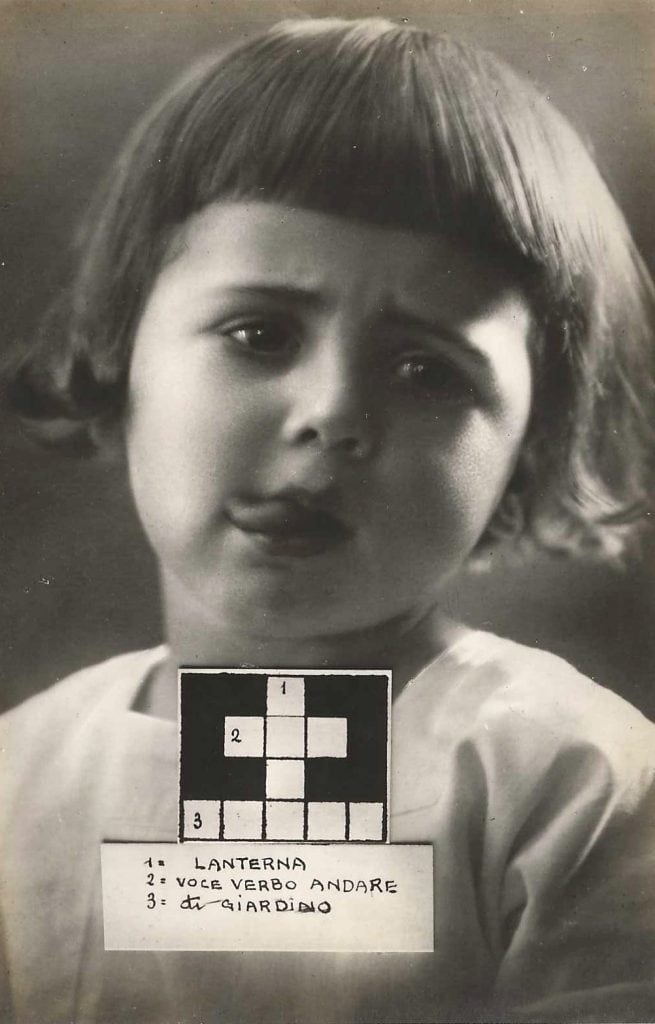

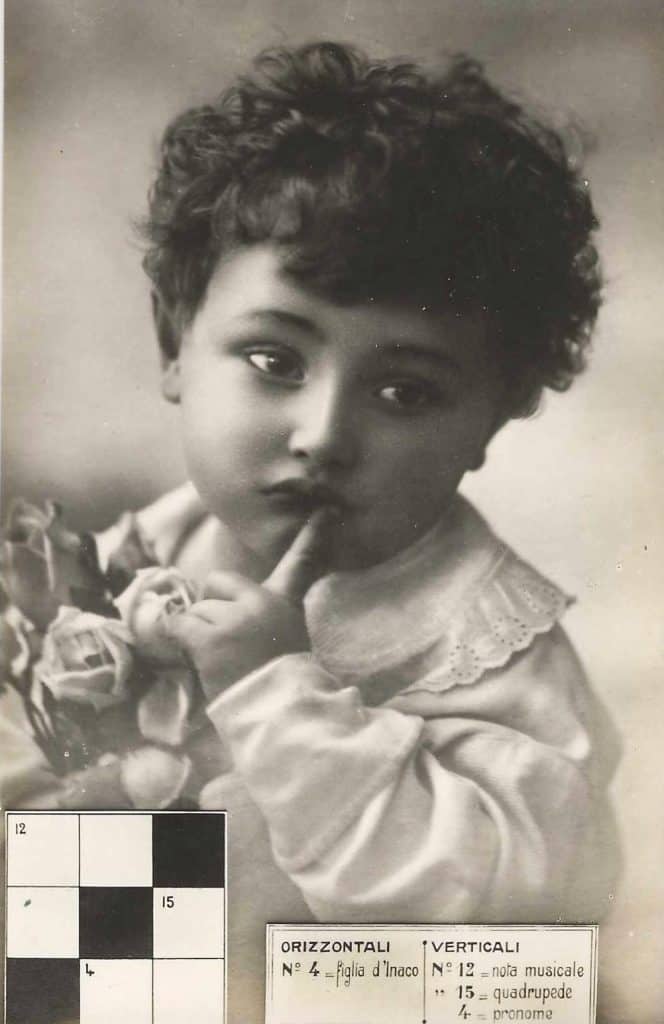
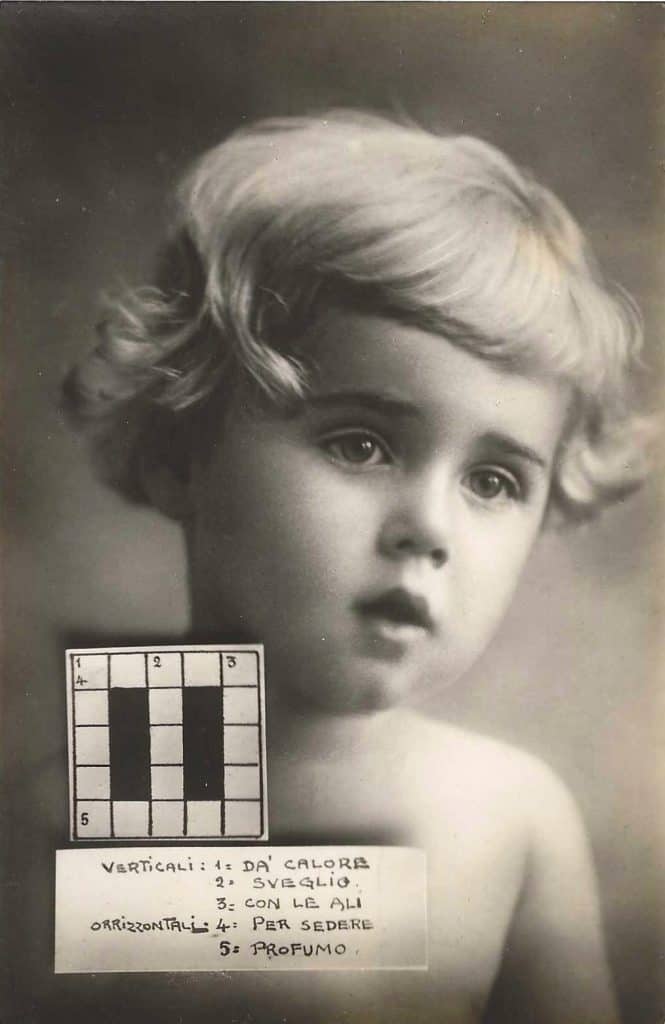
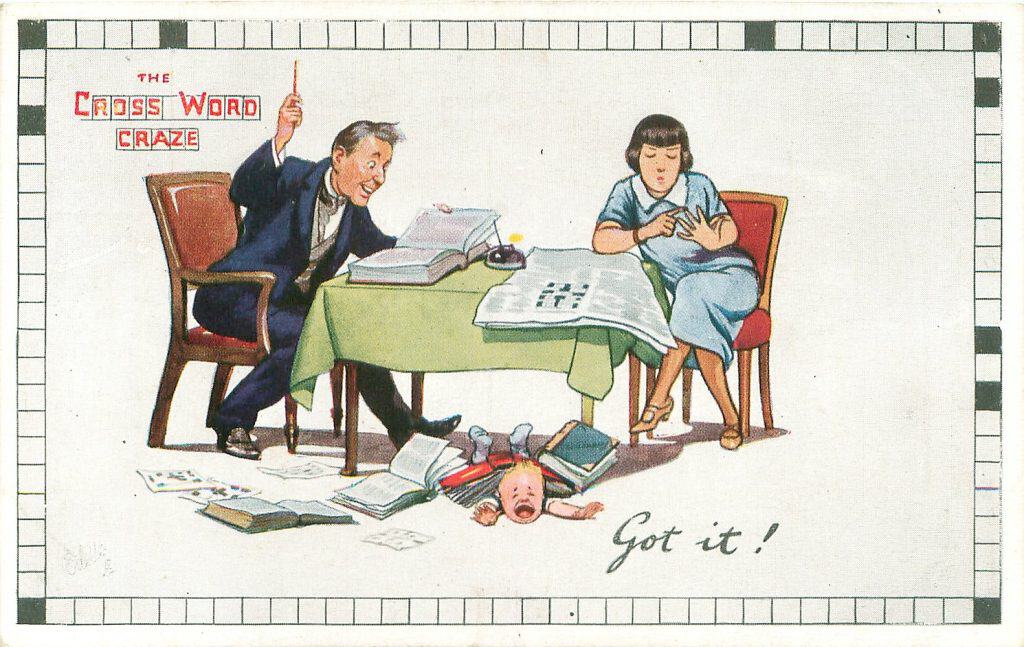
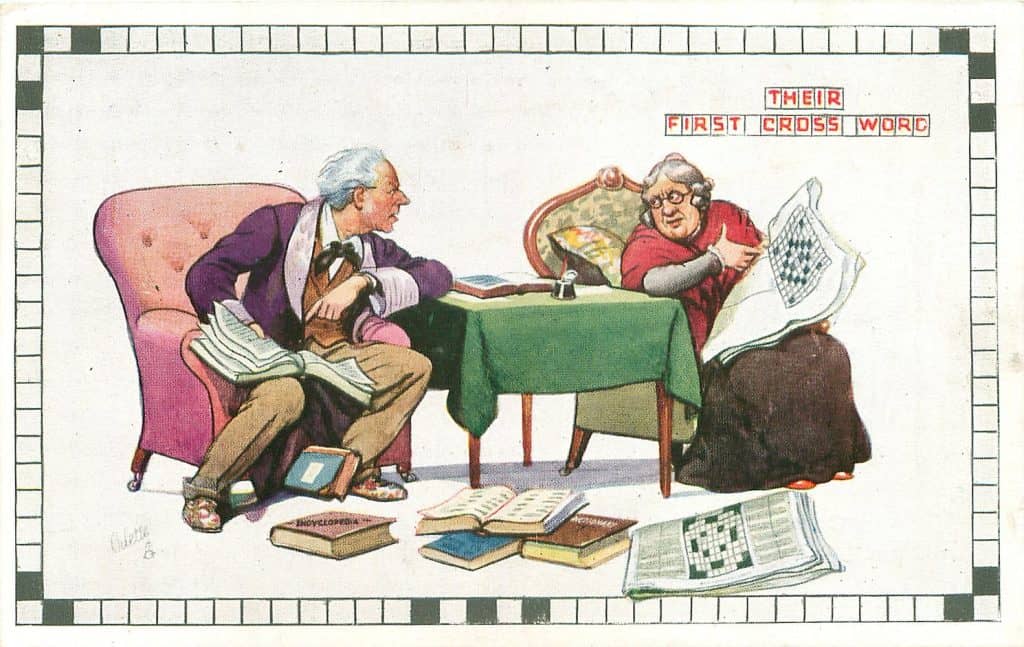
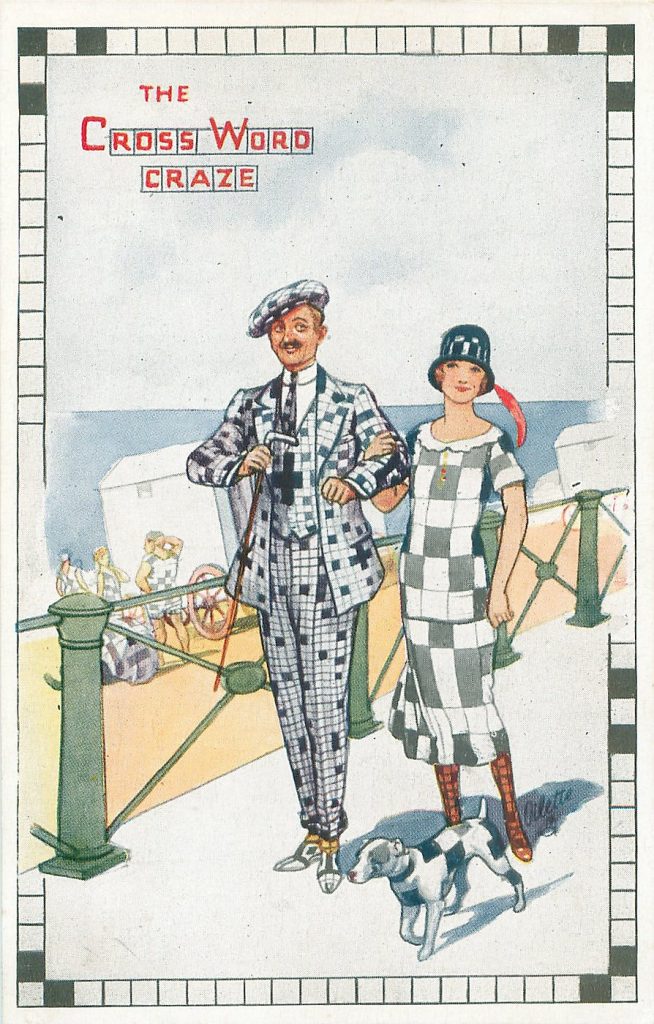

I enjoyed this article as I like cryptic crosswords and have picked up one or two ‘crossword’ postcards over recent years.
Bravo, Ray, for a piece that’s nicely presented–though it makes me shamefully envious! I have but 10 crossword-puzzle cards–2 of which are of the type you refer to as Italian, 7 of which are from a grouping that you don’t mention–namely, non-chrome, continental-size French cards signed Barberousse. If you’re not familiar with these cards, I’d be happy to send you scans if you can tell me how to do so.
Very interesting article! I’ve never noticed these crossword-themed postcards before. Now I bet I will see them everywhere.
I enjoy solving crosswords in newspapers and books, but do appreciate the ability to check my answers immediately when I try my hand at the online cryptics published in The Guardian.
Finally got around to reading this issue. The article in crossword puzzles was awesome! I have the “photo” ones of tge children buy have never seen the “Postcard Craze” series. What fun!